![]()
2009 | Myths and Facts: UN Security Council Resolution 242 | by Eli E. Hertz
UN Security Council Resolution 242
Adopted: November 22, 1967.
Resolution 242 is the cornerstone for what it calls “a just and lasting peace.” It calls for a negotiated solution based on “secure and recognized boundaries” – recognizing the flaws in Israel’s previous temporary borders – the 1948 Armistice lines or the “Green Line”(1) – by not calling upon Israel to withdraw from ‘all occupied territories,’ but rather “from territories occupied.”
The United Nations Security Council adopted Resolution 242 in 1967 following the Six-Day War.(2) It followed Israel’s takeover of the Sinai Peninsula and Gaza Strip from Egypt, the Golan Heights from Syria, and the West Bank from Jordan. The resolution was to become the foundation for future peace negotiations. Yet contrary to Arab contentions, a careful examination of the resolution will show that it does not require Israel to return to the June 4, 1967 Armistice lines or “Green Line.”
Resolution 242 was approved on November 22, 1967, more than five months after the war. Although Israel launched a pre-emptive and surprise strike at Egypt on June 5, 1967, this was a response to months of belligerent declarations and actions by its Arab neighbors that triggered the war: 465,000 enemy troops, more than 2,880 tanks and 810 aircrafts, preparing for war, surrounded Israel in the weeks leading up to June 5, 1967. In addition, Egypt had imposed an illegal blockade against Israeli shipping by closing the Straits of Tiran, the Israeli outlet to the Red Sea and Israel’s only supply route to Asia – an act of aggression – in total violation of international law. In legal parlance, those hostile acts are recognized by the Law of Nations as a casus belli [Latin: Justification for acts of war].
The Arab measures went beyond mere power projection. Arab states did not plan merely to attack Israel to dominate it or grab territory; their objective was to destroy Israel. Their own words leave no doubt as to this intention. The Arabs meant to annihilate a neighboring state and fellow member of the UN by force of arms:(3)
• “We intend to open a general assault against Israel. This will be total war. Our basic aim will be to destroy Israel.” (Egyptian President Gamal Abdel-Nasser, May 26, 1967)
• “The sole method we shall apply against Israel is total war, which will result in the extermination of Zionist existence.” (Egyptian Radio, ‘Voice of the Arabs,’ May 18, 1967)
• “I, as a military man, believe that the time has come to enter into a battle of annihilation.” (Syrian Defense Minister Hafez al-Assad, May 20, 1967)
• “The existence of Israel is an error which must be rectified. … Our goal is clear – to wipe Israel off the map.” (Iraqi President Abdur Rahman Aref, May 31, 1967)
Arab declarations about destroying Israel were made preceding the war when control over the West Bank and the Gaza Strip (or Sinai and the Golan Heights) were not in Israel’s hands, and no so-called Israeli occupation existed.
That is why the UN Security Council recognized that Israel had acquired the territory from Egypt, Jordan, and Syria not as a matter of aggression, but as an act of self-defense. That is also why Resolution 242 was passed under Chapter VI of the UN Charter rather than Chapter VII. As explained above, UN resolutions adopted under Chapter VI call on nations to negotiate settlements, while resolutions under the more stringent Chapter VII section deal with clear acts of aggression that allow the UN to enforce its resolutions upon any state seen as threatening the security of another state or states.
Although Resolution 242 refers to “the inadmissibility” of acquiring territory by war, a statement used in nearly all UN resolutions relating to Israel, Professor, Judge Stephen M. Schwebel, former President of the International Court of Justice (ICJ) in the Hague, explains that the principle of “acquisition of territory by war is inadmissible” must be read together with other principles:
“… namely, that no legal right shall spring from a wrong, and the Charter principle that the Members of the United Nations shall refrain in their international relations from the threat or use of force against the territorial integrity or political independence of any State.”(4)
Resolution 242 immediately follows to emphasize the “need to work for a just and lasting peace in which every state in the area can live in security.”
While Resolution 242 may call upon Israel to withdraw from territory it captured during the war, the UN recognized that Israel cannot return to the non-secure borders existing before the Six-Day War that invited aggression – frontiers that the usually mild-mannered and eloquent former Israeli diplomat, the late Abba Eban, branded “Auschwitz borders.”
The Meaning of the Words “All” and “The”
As noted above, the UN adopted Resolution 242 in late November 1967, five months after the Six-Day War ended. It took that long because intense and deliberate negotiations were needed to carefully craft a document that met the Arabs’ demand for a return of land, and Israel’s requirement that the Arabs recognize Israel’s legitimacy, to make a lasting peace.
It also took that long because each word in the resolution was deliberately chosen, and certain words were deliberately omitted, according to negotiators who drafted the resolution.
So although Arab officials claim Resolution 242 requires Israel to withdraw from all territory it captured in June 1967, nowhere in the resolution is that demand delineated. Nor did those involved in the negotiations and drafting of the resolution want such a requirement. Instead, they say Resolution 242 explicitly and intentionally omitted the terms ‘the territories’ or ‘all territories.’
The wording of UN Resolution 242 clearly reflects the contention that none of the territories were occupied territories taken by force in an unjust war.
Because the Arabs were clearly the aggressors, nowhere in UN Security Council Resolutions 242 is Israel branded as an invader or unlawful occupierof the territories.
The minutes of the six month ‘debate’ over the wording of Resolution 242, as noted above, showing that draft resolutions attempted to brand Israel an aggressor and illegal occupier as a result of the 1967 Six-Day War, were all defeated by either the UN General Assembly or the Security Council.
Professor Eugene Rostow, then U.S. Undersecretary of State for Political Affairs, went on record in 1991 to make this clear:
“Resolution 242, which as undersecretary of state for political affairs between 1966 and 1969 I helped produce, calls on the parties to make peace and allows Israel to administer the territories it occupied in 1967 until ‘a just and lasting peace in the Middle East’ is achieved. When such a peace is made, Israel is required to withdraw its armed forces ‘from territories’ it occupied during the Six-Day War – not from ‘the’ territories nor from ‘all’ the territories, but from some of the territories, which included the Sinai Desert, the West Bank, the Golan Heights, East Jerusalem, and the Gaza Strip.”
Professor Rostow continues and describes:
“Five-and-a-half months of vehement public diplomacy in 1967 made it perfectly clear what the missing definite article in Resolution 242 means. Ingeniously drafted resolutions calling for withdrawals from ‘all’ the territories were defeated in the Security Council and the General Assembly. Speaker after speaker made it explicit that Israel was not to be forced back to the ‘fragile’ and ‘vulnerable’ Armistice Demarcation Lines [‘Green Line’], but should retire once peace was made to what Resolution 242 called ‘secure and recognized’ boundaries …”(5)
Lord Caradon, then the United Kingdom Ambassador to the UN and the key drafter of the resolution, said several years later:
“We knew that the boundaries of ’67 were not drawn as permanent frontiers; they were a cease-fire line of a couple decades earlier. We did not say the ’67 boundaries must be forever.”
Referring to Resolution 242, Lord Caradon added:
“The essential phrase which is not sufficiently recognized is that withdrawal should take place to secure and recognized boundaries, and these words were very carefully chosen: they have to be secure and they have to be recognized. They will not be secure unless they are recognized. And that is why one has to work for agreement. This is essential. I would defend absolutely what we did. It was not for us to lay down exactly where the border should be. I know the 1967 border very well. It is not a satisfactory border, it is where troops had to stop in 1947, just where they happened to be that night, that is not a permanent boundary … “(6)
In a 1974 statement he said:
“It would have been wrong to demand that Israel return to its positions of 4 June 1967. … That’s why we didn’t demand that the Israelis return to them and I think we were right not to.”(7)
It is true, as Arab leaders correctly note, that certain suggested drafts of Resolution 242 exist that contain that tiny controversial “the” in reference to territories. Arab leaders say this proves that Israel must withdraw from all territories captured in 1967. However, those versions of the resolution are in French. Under international law, English-language versions are followed and accepted as the conclusive reference point, and French versions are not.
Arthur J. Goldberg,(8) the U.S. Ambassador to the UN in 1967 and a key draftee of Resolution 242, stated:
“The notable omissions in language used to refer to withdrawal are the words the, all, and the June 5, 1967 lines. I refer to the English text of the resolution. The French and Soviet texts differ from the English in this respect, but the English text was voted on by the Security Council, and thus it is determinative. In other words, there is lacking a declaration requiring Israel to withdraw from the (or all the) territories occupied by it on and after June 5, 1967. Instead, the resolution stipulates withdrawal from occupied territories without defining the extent of withdrawal. And it can be inferred from the incorporation of the words secure and recognized boundaries that the territorial adjustments to be made by the parties in their peace settlements could encompass less than a complete withdrawal of Israeli forces from occupied territories.”(9)
Political figures and international jurists have discussed the existence of “permissible” or “legal occupations.” In a seminal article on this question, entitled What Weight to Conquest, Professor, Judge Schwebel wrote:
“A state [Israel] acting in lawful exercise of its right of self-defense may seize and occupy foreign territory as long as such seizure and occupation are necessary to its self-defense. … Where the prior holder of territory had seized that territory unlawfully, the state which subsequently takes that territory in the lawful exercise of self-defense has, against that prior holder, better title.
“As between Israel, acting defensively in 1948 and 1967, on the one hand, and her Arab neighbors, acting aggressively, in 1948 and 1967, on the other, Israel has the better title in the territory of what was Palestine, including the whole of Jerusalem, than do Jordan and Egypt.”(10)
Professor Julius Stone, a leading authority on the Law of Nations, has concurred, further clarifying:
“Territorial Rights Under International Law. … By their [Arab countries] armed attacks against the State of Israel in 1948, 1967, and 1973, and by various acts of belligerency throughout this period, these Arab states flouted their basic obligations as United Nations members to refrain from threat or use of force against Israel’s territorial integrity and political independence. These acts were in flagrant violation inter alia of Article 2(4) and paragraphs (1), (2), and (3) of the same article.”(11)
If the West Bank and Gaza were indeed occupied territory – belonging to someone else and unjustly seized by force – there could be no grounds for negotiating new borders.
The Drafting History of 242 Shows it Pertains to all Refugees – Jewish and Arab
Lastly, Resolution 242 speaks of “a just settlement of the refugee problem,” not ‘the Palestinian or Arab refugee problem.’ The history of the resolution shows that it was intentional and reflected recognition that the Arab-Israeli conflict created two refugee populations, not one. Parallel to the estimated 600,000 Arabs who left Israel, more than 899,000(12) Jews fled from Arab countries in the aftermath of the 1948 war – 650,000 of them finding asylum in Israel.
A history of the behind-the-scenes work drafting the resolution shows that the former Soviet Union Ambassador Vasiliy Vasilyevich Kuznetsov sought to restrict the term ‘just settlement’ to Palestinian refugees only. But former U.S. Justice Arthur J. Goldberg, the American Ambassador to the UN who played a key role in the ultimate language adopted, pointed out:
“A notable omission in 242 is any reference to Palestinians, a Palestinian state on the West Bank or the PLO. The resolution addresses the objective of ‘achieving a just settlement of the refugee problem.’ This language presumably refers both to Arab and Jewish refugees, for about an equal number of each abandoned their homes as a result of the several wars.”(13)
Appendix A – UN Security Council Resolution 242 (1967) of 22 November 1967
The Security Council,
Expressing its continuing concern with the grave situation in the Middle East,
Emphasizing the inadmissibility of the acquisition of territory by war and the need to work for a just and lasting peace in which every State in the area can live in security,
Emphasizing further that all Member States in their acceptance of the Charter of the United Nations have undertaken a commitment to act in accordance with Article 2 of the Charter,
1. Affirms that the fulfilment of Charter principles requires the establishment of a just and lasting peace in the Middle East which should include the application of both the following principles:
(i) Withdrawal of Israel armed forces from territories occupied in the recent conflict;
(ii) Termination of all claims or states of belligerency and respect for and acknowledgment of the sovereignty, territorial integrity and political independence of every State in the area and their right to live in peace within secure and recognized boundaries free from threats or acts of force;
2. Affirms further the necessity
(a) For guaranteeing freedom of navigation through international waterways in the area;
(b) For achieving a just settlement of the refugee problem;
(c) For guaranteeing the territorial inviolability and political independence of every State in the area, through measures including the establishment of demilitarized zones;
3. Requests the Secretary-General to designate a Special Representative to proceed to the Middle East to establish and maintain contacts with the States concerned in order to promote agreement and assist efforts to achieve a peaceful and accepted settlement in accordance with the provisions and principles in this resolution;
4. Requests the Secretary-General to report to the Security Council on the progress of the efforts of the Special Representative as soon as possible.
Adopted unanimously at the 1382 meeting
Notes:
[1] Israel’s pre-1967 borders reflected the deployment of Israeli and Arab forces on the ground after Israel’s War of Independence in 1948. Professor Judge Stephen M. Schwebel, the former President of the International Court of Justice clarified in his writings Justice in International Law that the 1949 armistice demarcation lines are not permanent borders: “The armistice agreements of 1949 expressly preserved the territorial claims of all parties and did not purport to establish definitive boundaries between them.”abeled the “Green Line” merely because a green pencil was used to draw the map of the armistice borders.
[2] See Appendix “A” – full text of UN Resolution 242.
[3] Disputed Territories: Forgotten Facts about the West Bank and Gaza Strip, MFA, February 2003, Disputed Territories: Forgotten Facts about the West Bank and Gaza Strip
[4] Judge Schwebel, “What Weight to Conquest?” in Justice in International Law, Cambridge University Press, 1994. Opinions quoted in this article are not derived from his position as a judge of the ICJ.
[5] Professor Eugene V. Rostow, The Future of Palestine, Institute for National Strategic Studies, November 1993. Professor Rostow was Sterling Professor of Law and Public Affairs Emeritus at Yale University and served as the Dean of Yale Law School (1955-66); Distinguished Research Professor of Law and Diplomacy, National Defense University; Adjunct Fellow, American Enterprise Institute. In 1967 as U.S. Under-Secretary of State for Political Affairs he become a key draftee of the UN Security Council Resolution 242.
[6] Lord Caradon, interviewed on Kol Israel (The Voice of Israel Radio) in February 1973. Lord Caradon (Sir Hugh Foot) was the UK representative to the UN in 1967. His final draft becomes the foundation for UN Resolution 242.
[7] Lord Caradon to the Beirut Daily Star on 12 June 1974.
[8] Arthur J.He was a Goldberg, was a professor of law at the John Marshall Law School in Chicago. ppointed in 1962 to the U.S. Supreme Court. In 1965 he was appointed U.S. representative to the United Nations. Judge Goldberg was a key draftee of UN Resolution 242.
[9] Judge Goldberg. U.N. Resolution 242: Origin, Meaning, and Significance. National Committee on American Foreign Policy. See article at: Judge Goldberg, UN Resolution 242: Origin, Meaning and Significance. (10159)
[10] Professor, Judge Stephen M. Schwebel, “What Weight to Conquest?” in Justice in International Law, Cambridge University Press, 1994. Opinions quoted in this critiques are not derived from his position as a judge of the ICJ.
[11] Professor Julius Stone, Israel and Palestine, Assault on the Law of Nations The Johns Hopkins University Press, 1981.
[12] The New York Times. “Jews in Grave Danger in all Moslem Lands” May 19, 1948.
[13] Judge Goldberg, Resolution 242 After Twenty Years at: . (10789) Judge Goldberg, Resolution 242 after Twenty Years
This document uses extensive links via the Internet. If you experience a broken link, please note the 5 digit number (xxxxx) at the end of the URL and use it as a Keyword in the Search Box at: MEFacts.
Copyright – Original materials copyright (c) by the authors.
About the author:
Eli E. Hertz is the president of Myths and Facts, an organization devoted to research and publication of information regarding US interests in the world and particularly in the Middle East. Mr. Hertz is also the Chairman of the Committee for Accuracy in Middle East Reporting. His writings and opinions, unless stated otherwise, are not derived from his position as Chairman of CAMERA.



 RSS
RSS

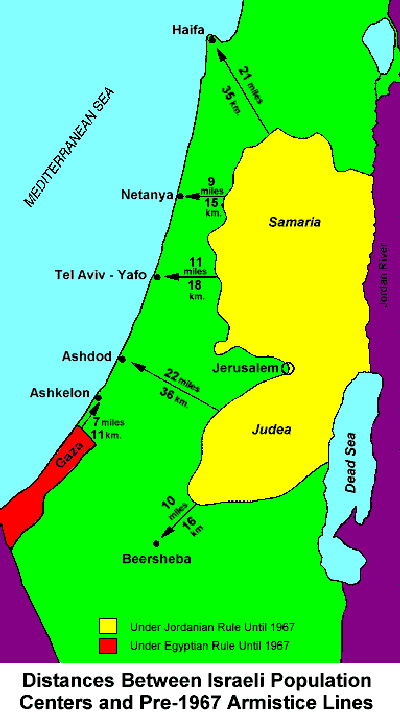
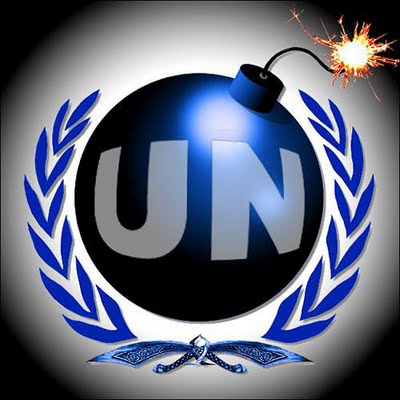


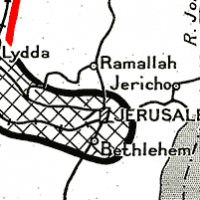

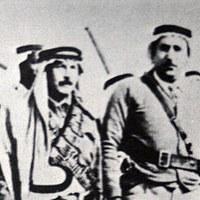
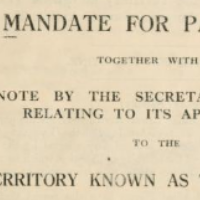




New article #crethiplethi.com related to #UN #resolution #242 and decision to suspend constructions #Judea #Samaria http://bit.ly/7wJN7E
New article #crethiplethi.com related to #UN #resolution #242 and decision to suspend constructions #Judea #Samaria http://bit.ly/7wJN7E
UN Security Council Resolution 242 | #Israel #jcot #tcot #twcot http://j.mp/7wJN7E
RT @CrethiPlethi: UN Security Council Resolution 242 | #Israel #jcot #tcot #twcot http://j.mp/7wJN7E
RT @CrethiPlethi: UN Security Council Resolution 242 | #Israel #jcot #tcot #twcot http://j.mp/7wJN7E